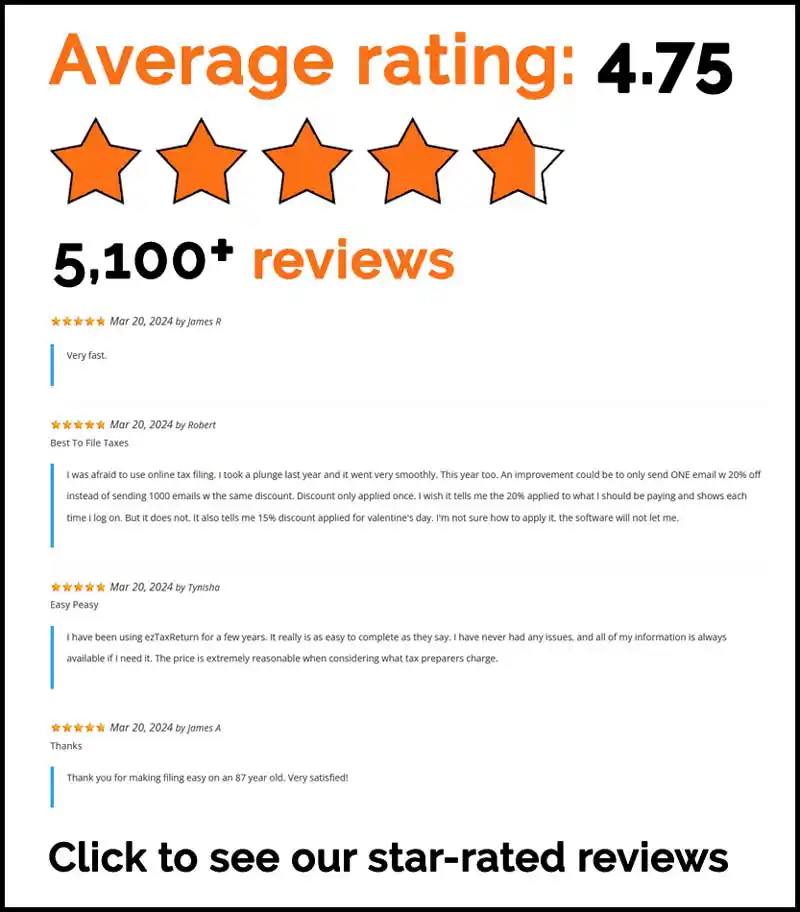A 1099-K form is sent by payment processors like PayPal or credit card companies to report how much money you received for goods and services. If you get paid through these platforms, this form helps you understand what a 1099-K is and how to report your income to the IRS.
Key Takeaways
- Form 1099-K tracks gross payments from payment processors like PayPal and Venmo, crucial for reporting income accurately.
- The IRS is lowering the 1099-K reporting threshold to capture more unreported income, particularly affecting gig workers and online sellers.
- Accurate recordkeeping is essential for tax reporting; it helps match your reported income with what’s on Form 1099-K and supports your deductions.
What Is Form 1099-K?
Form 1099-K reports gross payment transactions from third-party settlement organizations and payment card processors, including payment settlement entities. If you’ve received payments via credit or debit cards, or through platforms like PayPal or Venmo for services or goods, this form reports those transactions, capturing the total payments received over the year before any deductions or adjustments.
Payment processors or platforms issue the form. For instance, online marketplaces or gig economy apps send you Form 1099-K if you sell goods or provide services. The form must be sent by January 31 each year, giving you the information needed to file your tax return.
Form 1099-K is typically sent electronically or via mail. It includes all transactions made during the previous tax year, reflecting the gross payment amount received. This form helps you report your income accurately and avoid potential issues with the IRS.
Why Was the 1099-K Threshold Changed?
The IRS adjusted the reporting threshold for Form 1099-K to capture more unreported income. Previously, the threshold was high, over $20,000 in sales and more than 200 transactions. This left many smaller transactions unreported. Lowering this threshold ensures more income is captured and reported, particularly from gig economy workers and online sellers, helping close the tax gap.
Starting in 2024, the threshold will gradually decrease, so taxpayers must stay informed and adjust their reporting practices. Some payment apps or online marketplaces might send a Form 1099-K even if total payments are below the mandatory reporting threshold, so be aware of this possibility.
Key Information on a 1099-K
Form 1099-K contains key information necessary for accurately reporting your income. The two main components are the Payee’s Taxpayer Identification Number (TIN) and the gross payment amount.
Understanding these elements ensures your income is reported correctly and matches IRS records.
Payee’s Taxpayer Identification Number (TIN)
Your Taxpayer Identification Number (TIN) is critical. A TIN can be a Social Security Number (SSN), Individual Taxpayer Identification Number (ITIN), or Employer Identification Number (EIN). This number uniquely identifies you or your business in IRS records for accurate tax reporting.
Ensuring the correct TIN on your tax documents means your income is accurately reported and your tax records are in order. Any discrepancies can lead to issues, so double-check this information when you receive Form 1099-K.
Gross Payment Amount
The gross payment amount on Form 1099-K represents the total payments received before any deductions or adjustments. This figure includes all payments made through payment cards and third-party networks, capturing the complete amount originally paid to you.
The gross payment amount is reported before any fees, refunds, or other deductions. This number is the total amount received, not necessarily the amount kept after expenses. Understanding this distinction is crucial for accurate income reporting and tax filing.
How to Use Form 1099-K for Income Reporting
Using Form 1099-K for income reporting involves more than copying numbers onto your tax return. You must report all income from sales and services, regardless of whether you receive a Form 1099-K. Keep track of all payments to ensure they are accurately recorded.
Even without a Form 1099-K, you must report all received payments and receive payments accurately. Maintain accurate records of all transactions, including payment app reports, online marketplace records, and payment card receipts. This helps match the information reported on Form 1099-K and ensures your tax return is correct.
Reporting Business Income
When reporting business income, include the amount reported on Form 1099-K in your gross receipts. This total reflects your gross income before any deductions for business expenses are applied.
Form 1099-K ensures all payments received for business activities are reported accurately. Keeping detailed records of business transactions helps substantiate the amounts reported and ensures accurate reporting of gross income and report payments.
Reporting Personal Payments
Not all payments received need to be reported as taxable income. Payments from family or friends as personal gifts are not considered taxable income and do not require reporting on Form 1099-K. These personal payments should not be mixed with payments for goods or services.
If a personal payment is accidentally categorized as a business transaction, contact the payment platform to request a correction. This ensures that your Form 1099-K accurately reflects your taxable income, not personal transactions.
Correcting Errors on Form 1099-K
Errors on Form 1099-K can cause significant issues when filing your taxes. If you receive a 1099-K with incorrect details, contact the issuer immediately to rectify the issue. Address inaccuracies promptly to avoid complications with the IRS.
In some cases, you might need to request a corrected form. Provide necessary documentation to support the correction request. This helps the issuer make adjustments and issue a corrected form promptly.
Requesting a Corrected Form
When requesting a corrected 1099-K, provide documentation that supports the correction. This could include transaction records or other relevant documents verifying the correct amounts or details.
Contact the issuer directly, such as the payment processor or settlement organization, to request the correction. Clear communication and proper documentation can expedite the process and ensure accurate tax records.
Filing Taxes with Incorrect 1099-K
If a corrected 1099-K is unavailable by the tax deadline, report the incorrect amounts on your tax return as directed by the IRS. You can always file an amended return later.
Implications for Gig Workers and Online Sellers
For gig workers and online sellers, the new 1099-K reporting threshold has significant implications. More transactions will be captured, impacting tax obligations for many who were previously under the radar. Payment apps and online marketplaces are required to issue a 1099-K when the total amount of payments you receive exceeds:
- $5,000 in 2024
- $2,500 in 2025
- $600 in 2026 or later
Gig workers and online sellers need to stay informed about these changes to report their income correctly and avoid potential income tax issues.
Deducting Business Expenses
Deducting business expenses is essential for managing your taxable income. Expenses like fees, commissions, and mileage can be deducted from the gross payments reported on Form 1099-K. This helps reduce your overall taxable income, ensuring you only pay taxes on your net earnings.
Differentiate between business and personal expenses. Losses from business transactions can be deducted if you sold something for less than its cost. Expenses associated with hobby sales cannot be deducted, including costs incurred from virtual garage sales.
Keeping detailed records of all expenses and accurately categorizing them maximizes deductions.
Handling Multiple 1099-K Forms
Receiving multiple 1099-K forms can complicate tax reporting, especially if you use various payment platforms and accounts. Gig workers often drive for multiple platforms or have payments split among different processors, resulting in multiple forms.
Consolidate income from all forms to prevent underreporting. Accurate recordkeeping ensures all income is reported correctly. In some cases, you might also receive both a 1099-K and a 1099-NEC for the same income if payments are processed through platforms like PayPal or Venmo.
Common Scenarios and Their Tax Treatment
Different scenarios involving Form 1099-K require specific tax treatments. Understanding how to handle these situations helps you report your income accurately and avoid potential issues with the IRS.
Whether you’re selling personal items or working as a rideshare or delivery driver, knowing the tax implications is crucial.
Selling Personal Items
Selling personal items can have tax implications, especially if sold for a profit. When personal items are sold at a gain, the profit is subject to taxation. However, if sold for less than their purchase price, the loss does not incur tax obligation and cannot be deducted from taxable income.
Keep records of the original purchase price and selling price to accurately report any taxable gain or loss. If you incurred a loss on the sale, you can zero out the reported gross income from that sale, but cannot subtract it from your taxable income.
Rideshare and Delivery Drivers
Uber and Lyft provide Tax Summaries to their drivers, which include annual rideshare earnings, tax-deductible expenses, and records of rides and miles driven. These summaries are crucial for accurately reporting income and claiming deductions.
Drivers might receive multiple forms, including the 1099-K and 1099-NEC, to report their income. A 1099-K is issued when total fares exceed IRS reporting thresholds. Accurate reporting ensures all income is captured and properly taxed.
Keeping Accurate Records
Accurate recordkeeping is vital for ensuring that your income and deductible expenses are substantiated during tax reporting. Maintaining thorough transaction records helps match reported income with the amounts indicated on tax forms like the 1099-K.
Records can include payment app reports, receipts, and any relevant documentation that supports the amounts reported on Form 1099-K. Gig workers are encouraged to maintain detailed records of their business expenses to maximize deductions when reporting income.
Summary
Understanding Form 1099-K is crucial for accurately reporting your income and staying compliant with tax regulations. From knowing what the form is and why the reporting threshold has changed, to learning how to correct errors and handle multiple forms, this guide provides essential information to help you navigate your tax obligations.
Staying informed and proactive in managing your tax responsibilities can help you avoid potential issues with the IRS. By keeping accurate records and understanding the tax implications of different scenarios, you can ensure that your tax return is accurate and complete. Remember, knowledge is power when it comes to taxes, so keep learning and stay ahead of the game.
Frequently Asked Questions
What is Form 1099-K used for?
Form 1099-K is for reporting gross payment transactions from payment card processors and third-party settlement organizations. So, if you got payments through these channels, this form is important for your tax filing!
Why did the IRS change the 1099-K reporting threshold?
The IRS changed the 1099-K reporting threshold to make sure more unreported income gets taxed, keeping things fair. It’s all about tightening up the system to catch income that might otherwise slip through the cracks.
What should I do if I receive a 1099-K with incorrect details?
If you get a 1099-K with mistakes, just reach out to the issuer right away and ask for a correction. Make sure to have any supporting documents ready to help your case!
How do I report business income from a 1099-K?
Just add the amount from your 1099-K to your gross receipts and make sure all your business transactions are reported accurately. It’s that simple!
Are personal payments from friends and family reported on a 1099-K?
Nope, personal payments from friends and family, like gifts or reimbursements, aren’t reported on a 1099-K since they’re not taxable income.
The articles and content published on this blog are provided for informational purposes only. The information presented is not intended to be, and should not be taken as, legal, financial, or professional advice. Readers are advised to seek appropriate professional guidance and conduct their own due diligence before making any decisions based on the information provided.




